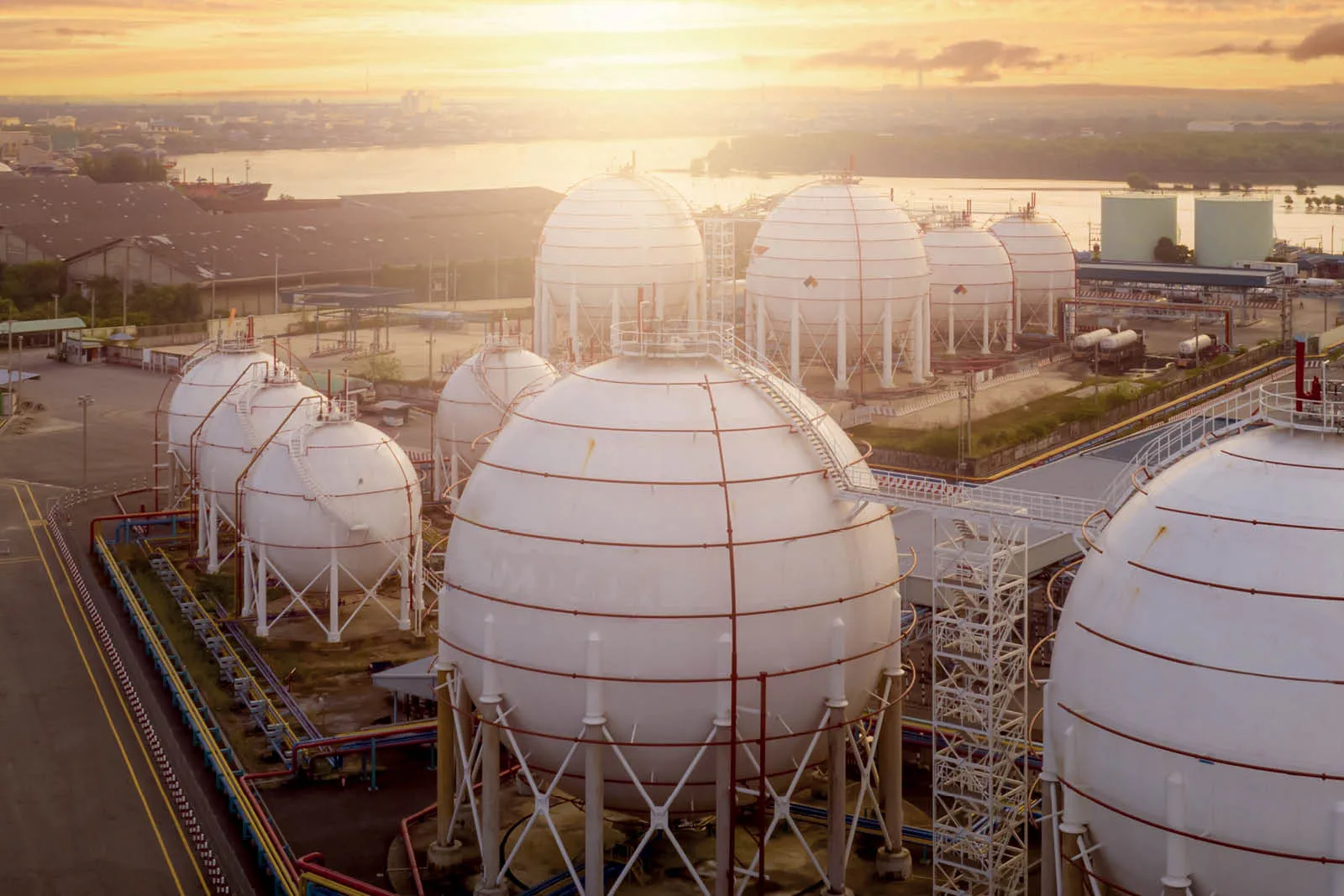With global economic and environmental factors at play, the liquefied petroleum gas (LPG) industry in the United States is rapidly evolving, presenting new challenges and opportunities. In this article, we explore the top five trends in the LPG sector and provide insights for companies to navigate the challenges and seize the opportunities.
The liquefied petroleum gas (LPG) industry is experiencing rapid evolution, driven by a convergence of global economic and environmental factors.
LPG is a versatile fuel that plays a crucial role in our daily lives. For example, propane is common in residential applications, while butane is used in the more commercial and automotive industries.
Compared to traditional fossil fuels like coal, LPG offers benefits such as ease of use, portability, and environmental friendliness. As a result, the LPG market has witnessed substantial growth, with an expected compound annual growth rate (CAGR) of 3.81% from 2023 to 2027. With such an attractive market outlook, it’s not surprising that the number of companies has increased. They all want to obtain a piece of the pie.
From pricing excellence to digital transformation, new customer acquisition, and decarbonization, multiple trends are shaping the future of the LPG industry in the US. Staying ahead of the curve and adapting to the changing landscape is essential for companies to maintain a competitive edge.
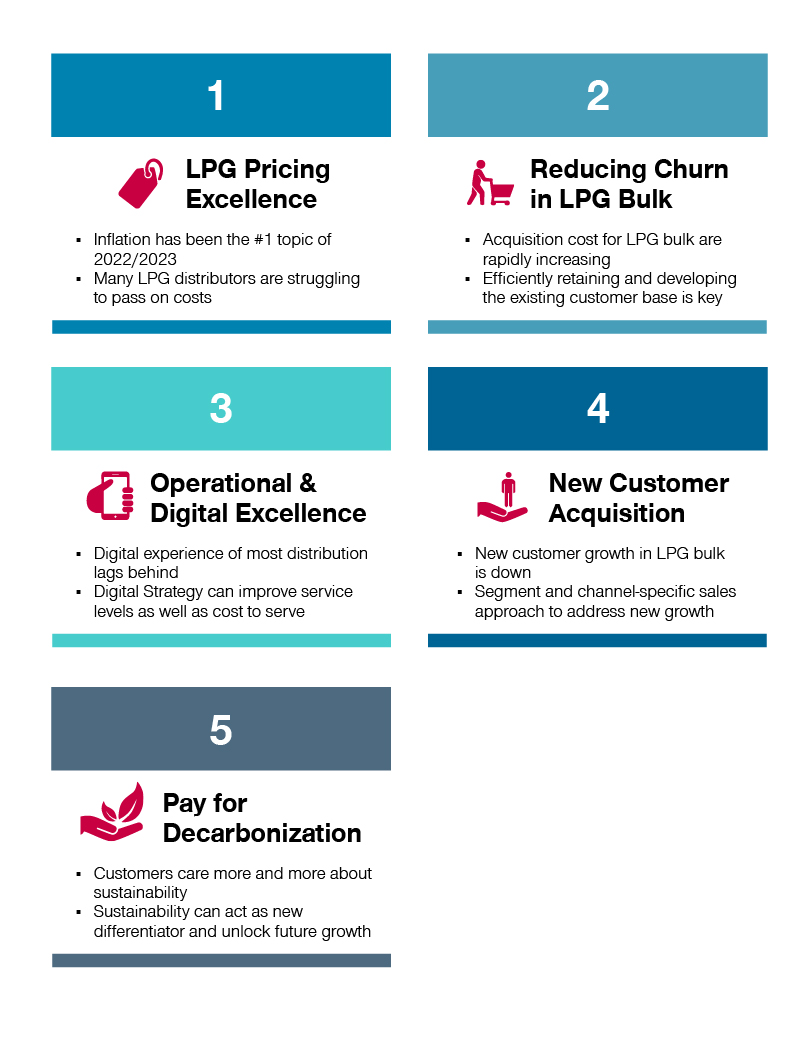
LPG pricing excellence
The LPG sector has felt the weight of inflation - a significant concern spanning various industries. The consequent surge in prices, driven by escalating raw material costs and transportation expenses, has posed a daunting task for distributors: maintaining competitiveness while ensuring affordability for their customers.
Pricing emerges as the most influential lever for maximizing profits in the LPG market. Our studies reveal that even a modest 5% price adjustment can yield a staggering 50% increase in profitability. However, the challenge for LPG distributors lies in their ability to swiftly pass on their own cost increases to customers. This delay in cost recovery poses a significant hurdle, hindering distributors from fully capitalizing on the profit potential offered by price adjustments.
To overcome these challenges and unlock growth potential, LPG distributors must actively pursue the following pricing initiatives:
- Conduct a price and value driver analysis to identify customers' maximum willingness-to-pay, ensuring both profitability and customer satisfaction
- Implement effective pricing tactics and contract renewals to mitigate the impact of inflation on LPG prices
- Equip sales teams with negotiation guidelines to drive successful deals and maximize customer satisfaction
- Develop a discount and rebate strategy that caters to both B2C and B2B customers
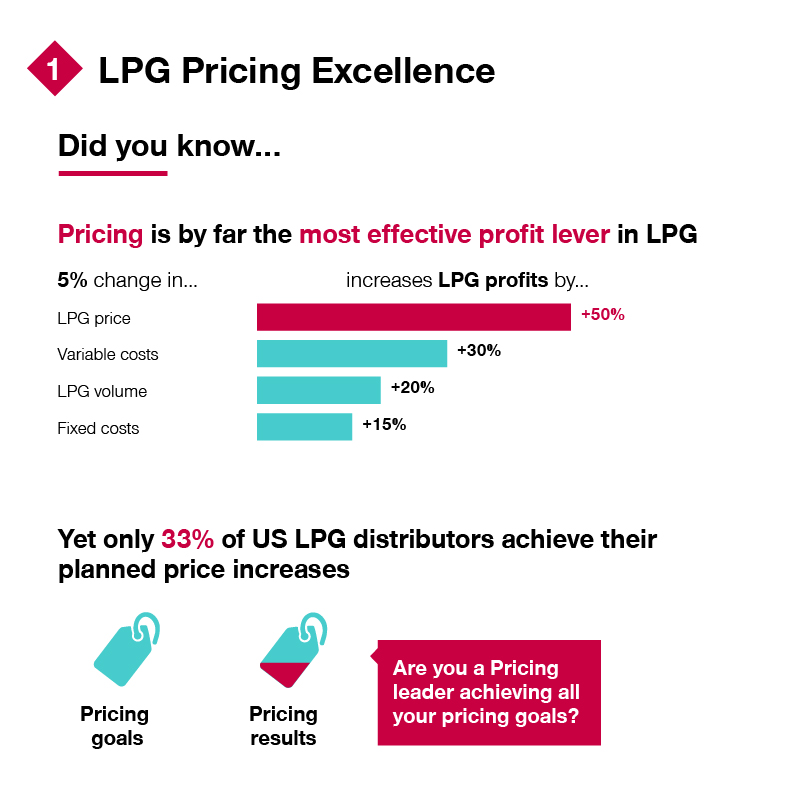
Reducing churn in LPG bulk
With customer acquisition costs for large key accounts increasing, retaining and developing the existing customer base is more important than ever.
Efficiently managing acquisition costs becomes paramount to prevent companies from relinquishing valuable customers and market share to more cost-savvy competitors. Additionally, if prices of LPG reach a level that customers find unacceptable or unaffordable, they are likely to explore alternative energy options that are more cost-effective. Therefore, if reducing prices is not feasible, companies should prioritize providing their customers with additionally tailored values instead.
LPG firms must adapt and take proactive measures such as:
- Analyze the customer base to identify and prioritize valuable key customers
- Utilize churn prediction modeling to proactively retain both B2C and B2B customers
- Develop a contract renewal strategy with personalized offerings to enhance customer loyalty
- Implement cross-selling, upselling, and deep-selling campaigns, such as transitioning customers from cylinder to bulk services
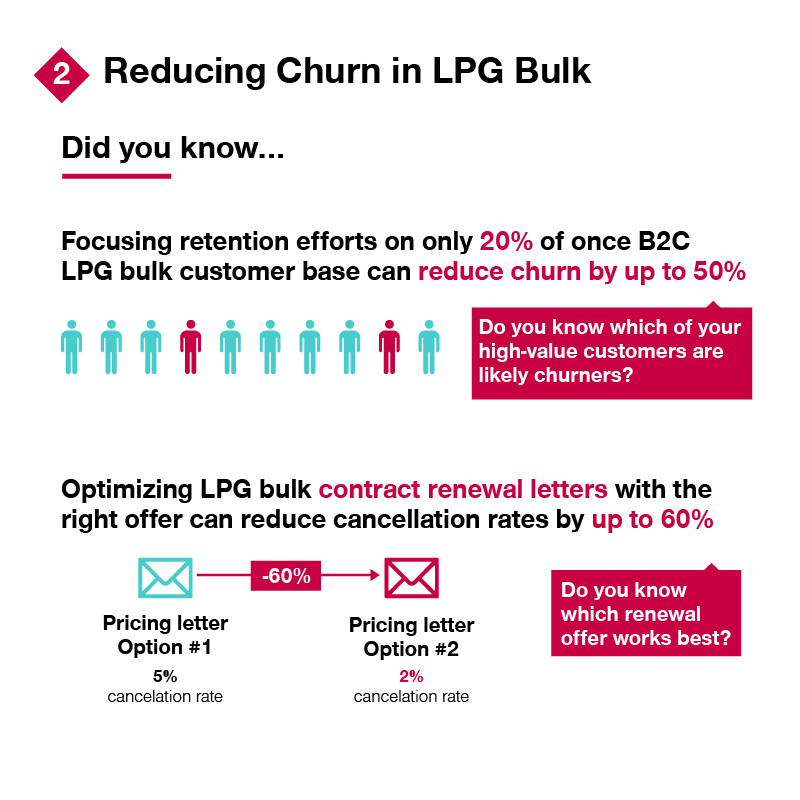
Operational and digital excellence
Despite the growing importance of digital technologies, many LPG distributors have fallen behind in developing their digital capabilities. However, there are solutions out there to stay ahead of the curve.
One option is the integration of Telemetry, a smart meter technology. Telemetry enables real-time data collection and remote monitoring of LPG tanks, providing valuable insights for digital solutions in the industry. Utilizing this technology, distributors can improve inventory management, optimize the supply chain, and enhance operational efficiency.
To this day, we observe limited adoption of such tools, resulting in limited digital accessibility. This explains the prevailing dissatisfaction among customers regarding their digital experience with LPG companies. The contrast becomes particularly frustrating for customers considering their daily encounters with seamless digital and app experiences offered by companies like Amazon.
This dissatisfaction provides several opportunities for companies to achieve competitive advantages with the implementation of innovative digital solutions:
- Create a seamless digital sales experience for customers (user friendly app/website)
- Harness the power of data analytics to optimize the supply chain, manage inventory, and reduce costs (by using tools like smart meters)
- Implement a tank utilization strategy with remote monitoring to ensure efficient use of resources
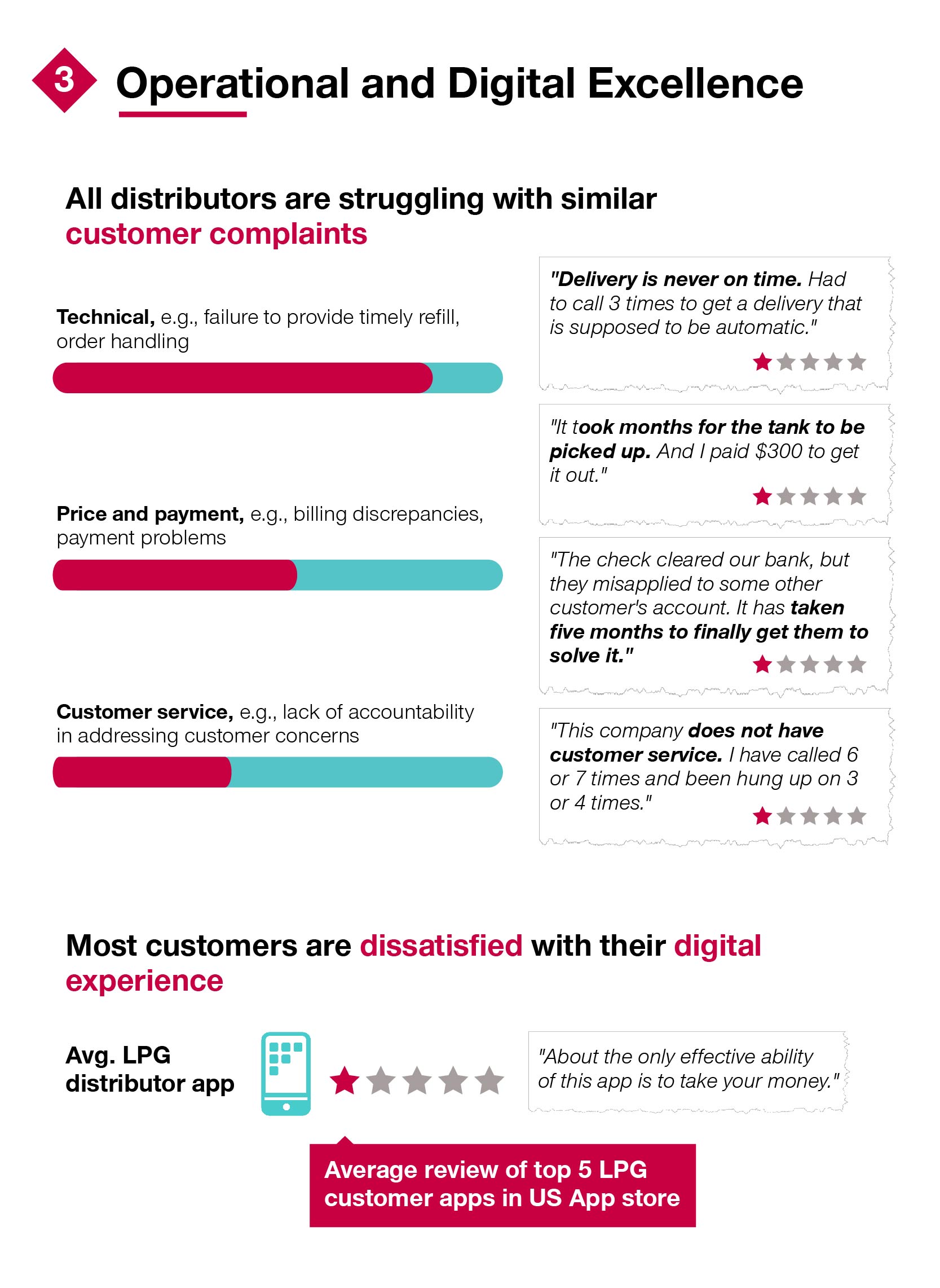
New customer acquisition
The significant growth of the LPG market has led to the emergence of several new players, resulting in increased competition and higher churn rates. This in turn is causing the cost of new customer acquisition to rise. Sales teams are under pressure and industry data reveals that less than one-third of LPG distributors have over 75% of their salesforce meeting quotas. Meanwhile sales teams are spending only 34% of their day engaging with prospects.
To overcome these challenges, companies can implement the following strategies to enhance their target approach:
- Identify the most promising markets, customers, and channels for your business
- Refine your product offering and improve communication to better meet customer need
- Optimize your sales organization structure to align with your growth objectives
- Provide clear guidance to your salesforce through KPIs, reporting, and effective compensation plans
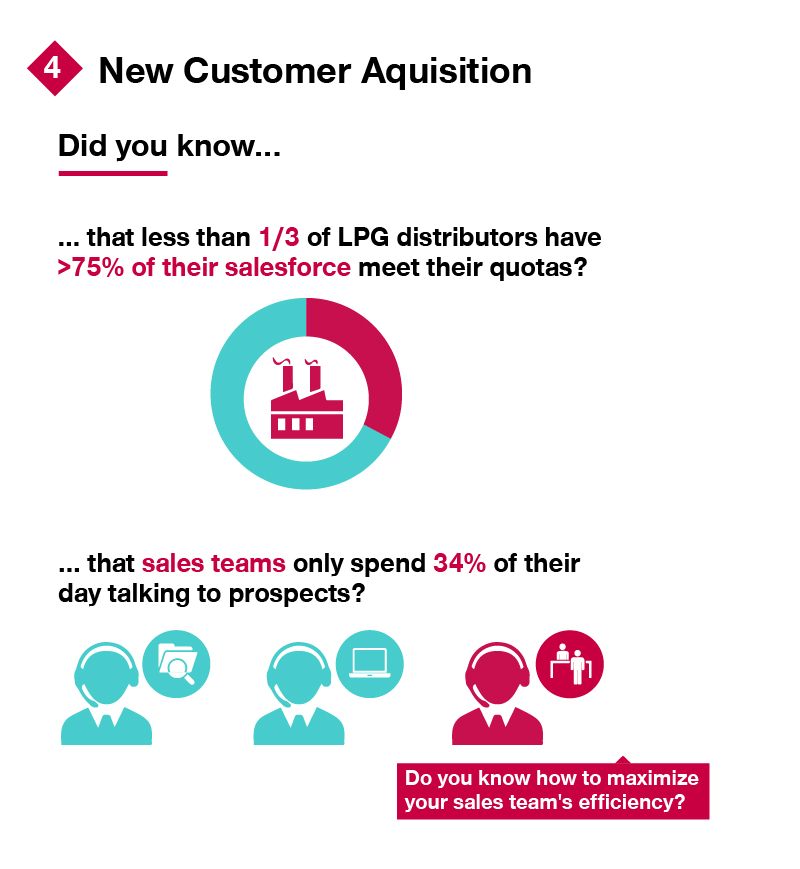
Pay for decarbonization
As customers increasingly prioritize environmental consciousness, LPG distributors are recognizing the need to offer eco-friendly products and services that serve as a distinguishing factor and unlock future growth. Our studies have revealed that, for certain customer segments, sustainability has already overtaken price and become the number one driver for a customer’s willingness to pay.
This presents several opportunities for LPG firms to differentiate themselves:
- Identify customer segments with a strong interest in sustainable products and services
- Develop and validate a compelling value proposition for your sustainable products, such as BioLPG
- Update your pricing strategy to incorporate a "green price premium" that reflects the environmental benefits
- Implement a strategy to finance your carbon reduction initiatives and achieve your net zero targets
In conclusion, the LPG industry is undergoing a transformative phase, presenting a unique mix of challenges and opportunities for distributors. To drive sustainable growth and stay ahead of the competition, it is crucial for companies to embrace a proactive mindset. By strategically tackling pricing inconsistencies, using the power of data analytics for optimization, identifying high-potential markets and customers, and embracing eco-friendly solutions, LPG distributors can pave the way for success in this dynamic landscape and lead the way toward a sustainable and thriving future.
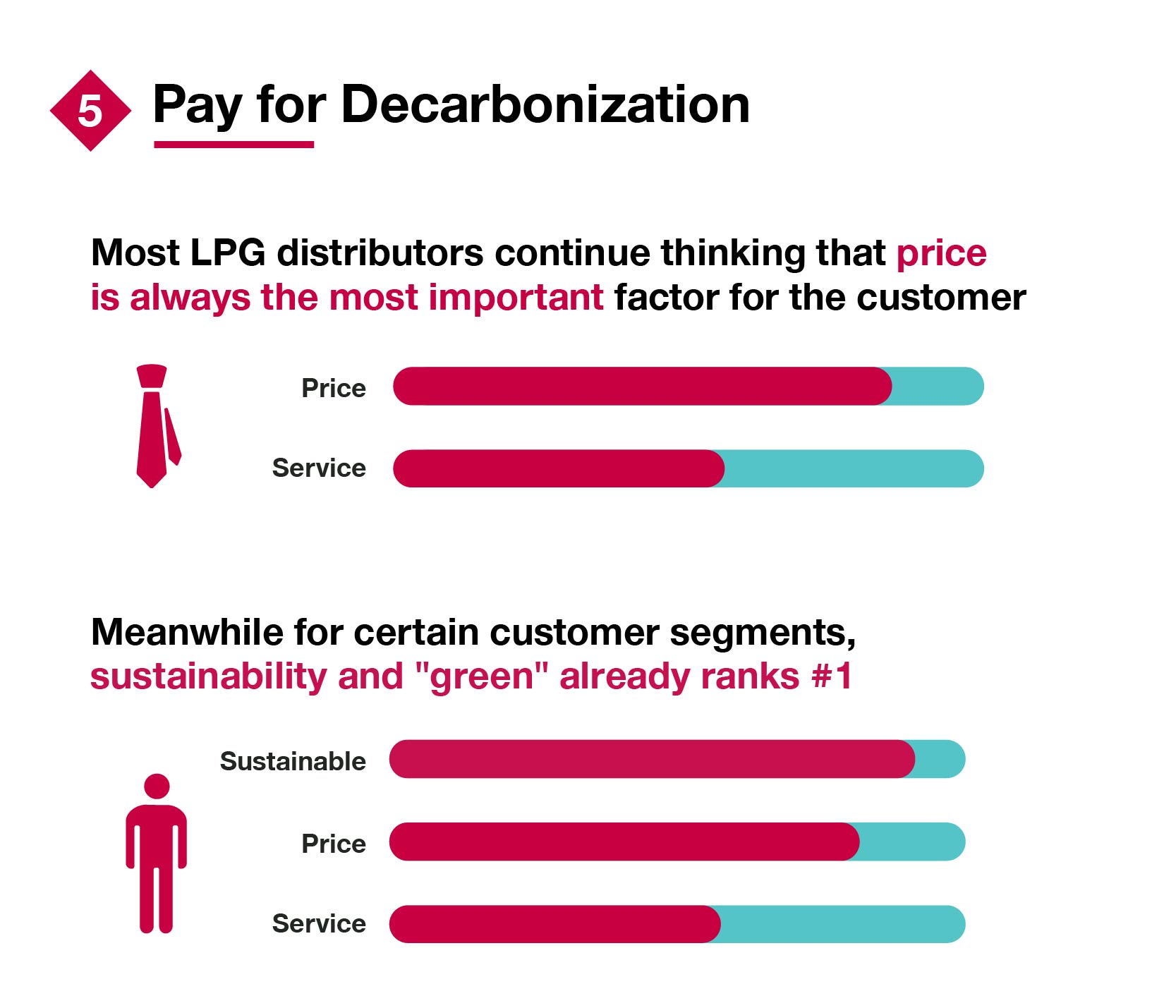
How we can help
We help oil and gas companies drive growth and invest sustainably and successfully, working alongside your team to achieve the goals we’ve set together.
Our team combines specialist oil and gas, functional, and digital expertise. We know how to transform businesses to keep ahead in this increasingly volatile world. From strategies to tangible outcomes, our solutions are made to last.
We look forward to tackling your growth challenges!
Reach out to Thomas Haller and Philip Daus today.
Contributing Author:
- Konrad Izdebski, Consultant
Resources collection:
Industry: https://www.simon-kucher.com/en/industries/industrials/oil-gas
